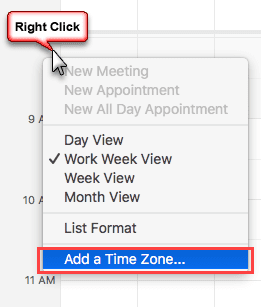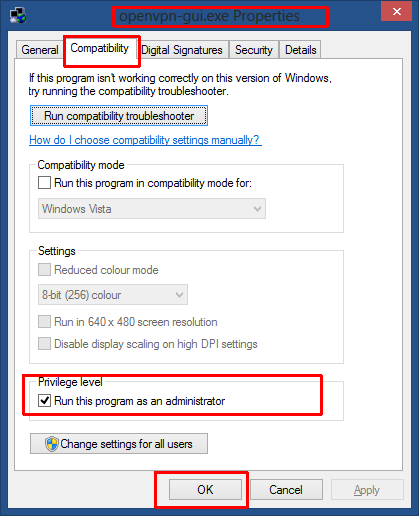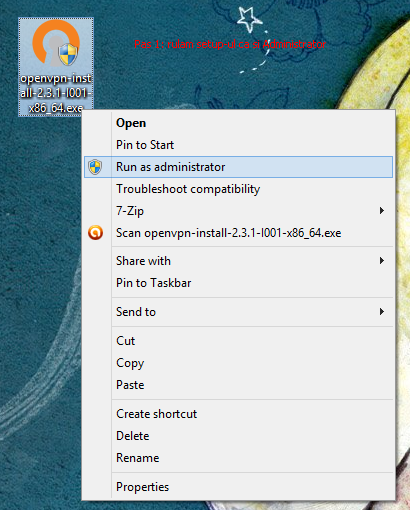
Outlook was not able to handle the recurrence rule for the DAYLIGHT block in the example timezone. Changing the VTIMEZONE definition to. BEGIN:VTIMEZONE TZID:Europe/Prague BEGIN:DAYLIGHT DTSTART:20100 TZOFFSETFROM:+0100 TZOFFSETTO:+0200 RRULE:FREQ=YEARLY;BYDAY=-1SU;BYMONTH=3 TZNAME:CEST END:DAYLIGHT BEGIN:STANDARD DTSTART:20100 TZOFFSETFROM:+0200 TZOFFSETTO:+0100 RRULE.
Starting in the spring of 2007, Daylight Saving Time (DST) start and end dates for the United States will transition to comply with the Energy Policy Act of 2005. DST dates in the United States will start three weeks earlier (the second Sunday in March) and will end one week later (the first Sunday in November).
If you are an Exchange Outlook calendar user, you may see the following symptoms in your calendar that are caused by the software not 'understanding' the new Daylight Saving Time start and end dates:
The list of time zones in Outlook 2007 is acquired from the Windows registry and is usually sufficient. The Microsoft time zone people do a good job of keeping that data current for time zones and daylight saving changes. For your information: in this article, we explain how time zones work in Outlook using the latest and greatest version of Outlook by the time of writing the article (Outlook 2019, part of the Office 365 subscription). Although interfaces may be a bit different, the basic idea remains the same for former Outlook releases, e.g. Outlook 2016, 2013. I have spent at least 90 minutes looking for something to download that will import into my Outlook 2019 calendar to remind me in advance of time changes. I quit watching news on TV years ago. I have subscribed to webinars, and afterward they offer a download of an ICS file to import into your calendar that adds calendar appointments for the.
- Recurring appointments that occur for the three week extended period between March 11, 2007, to April 1, 2007, AS WELL AS the one week extended period from October 28, 2007, to November 4, 2007 will be off by 1 hour.
- During these above mentioned time times, all day events may incorrectly span a two day period, or they may lose their 'all day' formatting and appear as appointments that begin at 1:00 a.m.
How can I tell if this affects me or not?
If you are an Exchange calendar user, open your calendar and look at the three week extended period between March 11 and April 1. Do you see any individual or recurring appointments that are incorrect? If you see individual appointments that are incorrect, such as a doctor appointment or meeting you have added to the calendar yourself, you can change them now to be correct with no worries that they will be altered by ITS or any external technical changes. If you see recurring meetings such as staff meetings that are incorrect for the three week extended period, yet then in April are correct again, this is the scenario ITS is working to correct using centralized administrative tools.
What is the difference between a recurring meeting and an individual meeting?
A recurring meeting can appear in your calendar daily, weekly, monthy, yearly, or however you may have configured it to continue and repeat. Examples are staff meetings, office hours, annual birthdays, or holidays. An individual meeting is one that happens once and is not configured to occur again. The distinction is important as Microsoft software places a time stamp on recurring meetings, but does not on individual meetings. The date stamp is how any update tool will 'know' whether to correct the appointment for DST or not.
What is ITS planning to do?
What is ITS planning to do? ITS is testing Microsoft’s DST server-side tool against a small sub-set of ITS members. Depending on the results of the initial testing, this same server-side tool may be tested against a larger group of Outlook Exchange users from ITS. If all goes as planned, the tool would be run against all Exchange user calendars on Saturday, March 3rd.
It is recommended that you wait for the server tool to be run to globally fix the incorrect recurring meetings in your calendar. Note that if you see any individual meetings in your calendar that are incorrect, you should fix them, as the server tool will not touch them.
What can I do now to minimize confusion?
- Keep a shadow calendar, on paper, for the three week extended period when appointments appear incorrectly.
- When organizing a meeting during the extended DST period, type the correct meeting time in the subject line or body of the message (for example, Project planning meeting at 8:30 a.m.) to avoid confusion, and to allow users to correct the appointment if necessary later.
- For any meeting with multiple attendees, remember that only the meeting requestor should update the time and send the update to the other attendees.
- If you are willing to manually fix your individual appointments, contact the ITS Help Desk to install and run the Update Tool documented below.
Is there anything I can do myself now?
Yes. All appointments and recurring events can simply be updated manually through Outlook to reflect the correct time.

If you have a large amount of appointments or recurring events, Microsoft has released an Update Tool that you can install on your computer if you have administrative rights. The tool will fix the recurring meetings you have organized. Be aware that by default, it will also change your individual appointments by one hour. Depending upon when the individual appointments were created this can cause them to now have the incorrect time. It is recommended that individual appointments be manually updated through Outlook. Events scheduled as All Day events will also need to be updated after the tool is run. See the instructions below for how to install and run the Outlook Time Zone Data Update.
How to install and run the Outlook Time Zone Data Update
You must have administrative rights on your machine to download and install this tool. If you do not have administrative rights, please contact the ITS Help Desk. Regular users can run the tool once it has been installed.
After running this tool, invitees to recurring meetings that you have arranged will receive invitations that reflect the correct time for these meetings. They will need to accept the invitations for the meeting to be updated in their calendars. Note that only the organizers of recurring meetings can fix these meetings; invitees must wait for the organizer to run the tool. Invitees must accept the invite update in order to see the change. At this time, ITS recommends that only organizers of recurring meeting affected during the extended DST time period run this tool; the server tool to be run next week should fix your calendar without having to run this tool.

The tool by default also changes individual appointments inappropriately by one hour, no matter when they were created, and you must fix these manually unless you click on the Details button as you are proceeding through the steps of the tool. This is the downside of running the client tool as opposed to waiting for the server tool to be run. The server tool will only repair your recurring meetings and leave your individual appointments alone.
Instructions
Outlook For Mac Daylight Savings Time 2020
- Log in to the computer as local administrator
- Launch Internet Explorer browser (Microsoft only supports their downloads via IE, not other browsers).
- Go to the Outlook Time Zone Data Update web page.
- If you see an orange-colored bar and a silver Continue button, click the Continue button and follow the prompts to Validate your copy of Windows with Microsoft. Continue to the next step. You may need to click the small, yellow warning bar if it appears at the top of the page.
- If you see a blue-colored bar and a silver Download button, click the Download button to download the tool.
- Double-click the TZMOVE.EXE file to install the tool
- The Change Calendar Time Zone window will open, you will be prompted to apply DST changes to any existing appointments and meetings. This is for the logged in local administrator, so click Cancel at this point
- Log out as local administrator
- Log in as the Exchange user (as you would normally log in to your Windows profile)
- Go to C:program filesmicrosoft officeoffice12Office Outlook Time Zone Data Update Tool and run tzmove.exe
- The Change Calendar Time Zone window will open
- The user’s full name will appear in the data file field.
- Click the OK button to start the tool.
- All calendar entries will be looked according to the rules explained in further detail with this MS KB article http://support.microsoft.com/kb/931667. This article is very helpful if you need to understand the full implications of DST changes on your calendar
- You can click on the Details button to display a list of all appointments to be altered. Then you can de-select any appointments that do not need to be changed, such as the individual appointments that are already correct. As they do not have time stamps, the individual appointments may appear on the list even if they do not need to be corrected.
- Note: To run the Outlook Zone Update tool again, browse to C:program filesmicrosoft officeoffice12Office Outlook Time Zone Data Update Tool and run tzmove.exe

Note: The Outlook DST tool can also be run on Public Folders as well as Personal Folders. Run the tool, click Custom then navigate to the folder.

More Microsoft-specific information regarding 'Preparing for daylight saving time changes in 2007 ' is available at: http://www.microsoft.com/windows/timezone/dst2007.mspx.
- This topic has 4 replies, 3 voices, and was last updated 5 years, 1 month ago by .
We’re having an issue on every site of ours I’ve checked that runs the plugin where, when the iCal file is imported into Microsoft Outlook, the event’s start and end times are one hour later than what they should be.
I checked the iCal file and the time zone and time code seem to be correct, so I think it’s an issue with how Microsoft Outlook is interpreting the time zones and possibly daylight savings time. Changing the time zone that is set in the event post from America/New York to America/Los Angeles moves the incorrect event time forward 3 hours as expected. I did notice that if the time zone for the event is set to UTC+0, the time is correct when imported into Outlook.
This is happening both in the Twenty Fourteen theme with The Events Calendar being the only plugin activated and in custom themes with many plugins and Events Calendar add-ons. We’re experiencing this on both single event and multiple event iCal files. And since the issue was originally reported by a client, I know it’s not just a problem with how our Outlook is set up.
I saw a lot of issues with iCal exported times when I searched your support forums, but none seemed to match up exactly. I also saw a couple issues reported on general iCal/Outlook compatibility in regard to time zones in Google searches.
Any ideas?
Thanks for reporting this, @Jay—sorry for the trouble here!
Two things stand out to me about your issues. First is what you said here:
I checked the iCal file and the time zone and time code seem to be correct, so I think it’s an issue with how Microsoft Outlook is interpreting the time zones and possibly daylight savings time.
If our generated time zones are correct, and Outlook is getting the timing wrong a bit, then unfortunately it may indeed be an Outlook issue that we (and you) are at the mercy of. 🙁
However, this is interesting:
Changing the time zone that is set in the event post from America/New York to America/Los Angeles moves the incorrect event time forward 3 hours as expected. I did notice that if the time zone for the event is set to UTC+0, the time is correct when imported into Outlook.
What happens with events when you use their UTC numerical equivalents? So, in other words, for example
• Do a test import where the events are using the timezone America/New York.
• Then do a test import where the events are using the timezone UTC-5.Is there any difference in behavior in this specific testing?
Thank you!
GeorgeThank you so much for your testing here.
What you wrote here is unfortunately not possible at this time: Kingdom come deliverance console commands not working.
Is it possible for the calendar on the site to use America/New_York but have the iCal files generate with the appropriate UTC+0 timestamps?
However, I wanted to confirm that this appears to be the bug:
So I think Outlook is having trouble applying Daylight Savings Time to the “America/New_York” time zone ID.
We’ve confirmed that this is a bug and have a fix coming out in the next maintenance release that SHOULD address this. That update should be published in the next two weeks.
I’m sorry about the timeline here but just wanted to share that our own testing yields similar results to your testing. We’re working on a fix here and it should do the job.
Daylight Savings Time strikes again!
Thank you for your patience here, @Jay. Stay tuned for that next update and let me know any other thoughts/questions you might have here in the meantime.
Sincerely,
GeorgeThis topic has not been active for quite some time and will now be closed.
If you still need assistance please simply open a new topic (linking to this one if necessary)
and one of the team will be only too happy to help.
Outlook For Mac Daylight Savings Time 2020
- The topic ‘iCal Timezone Issue with Microsoft Outlook’ is closed to new replies.